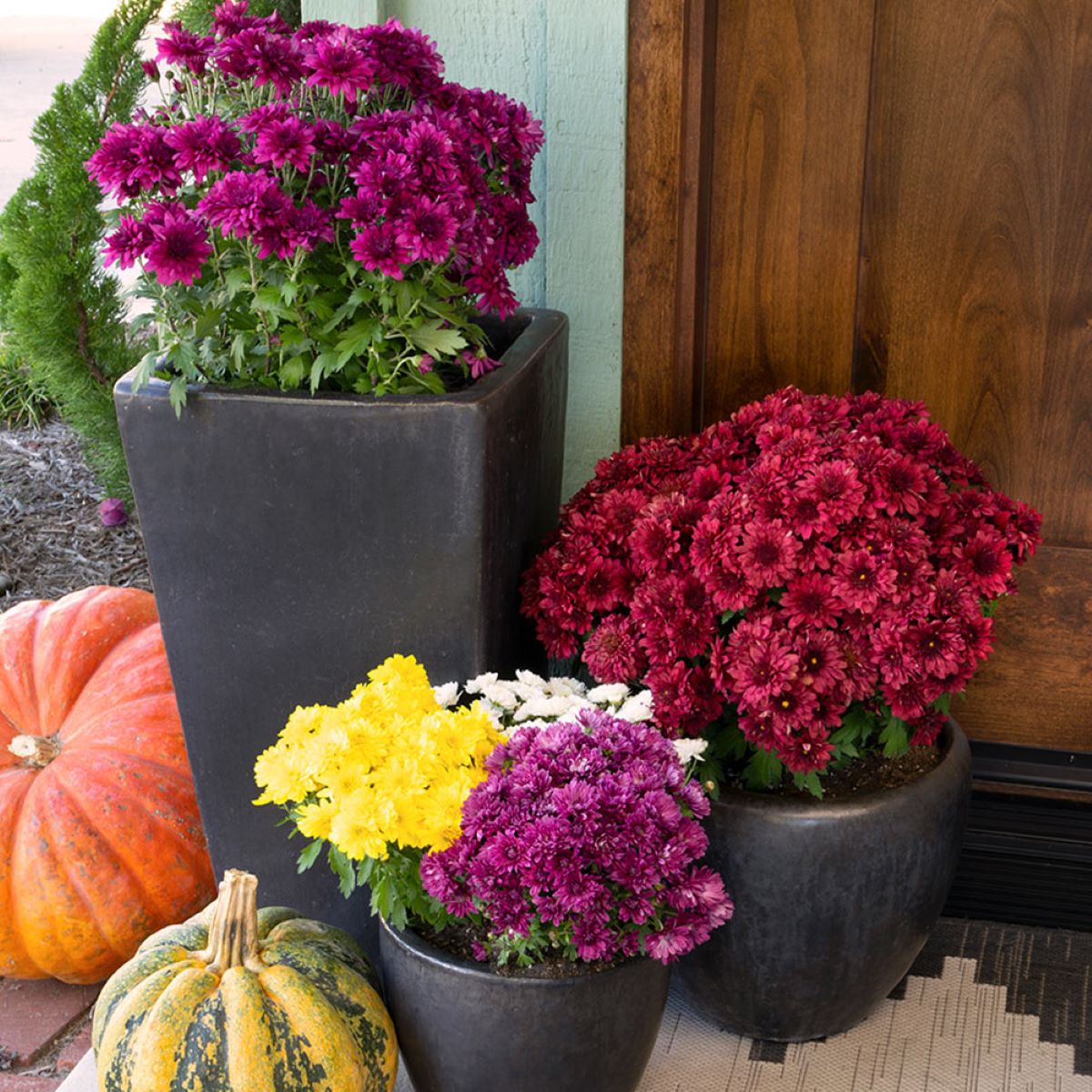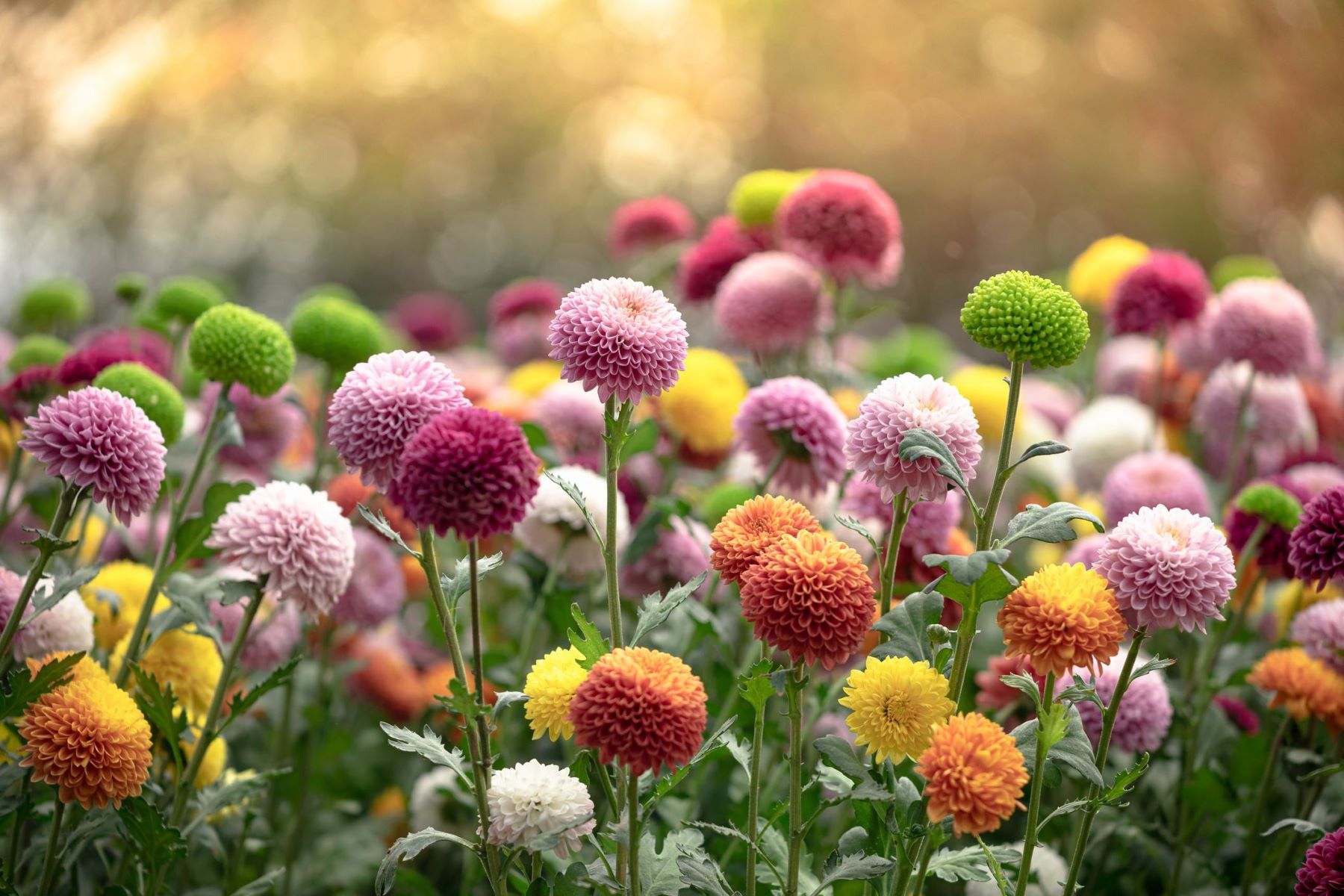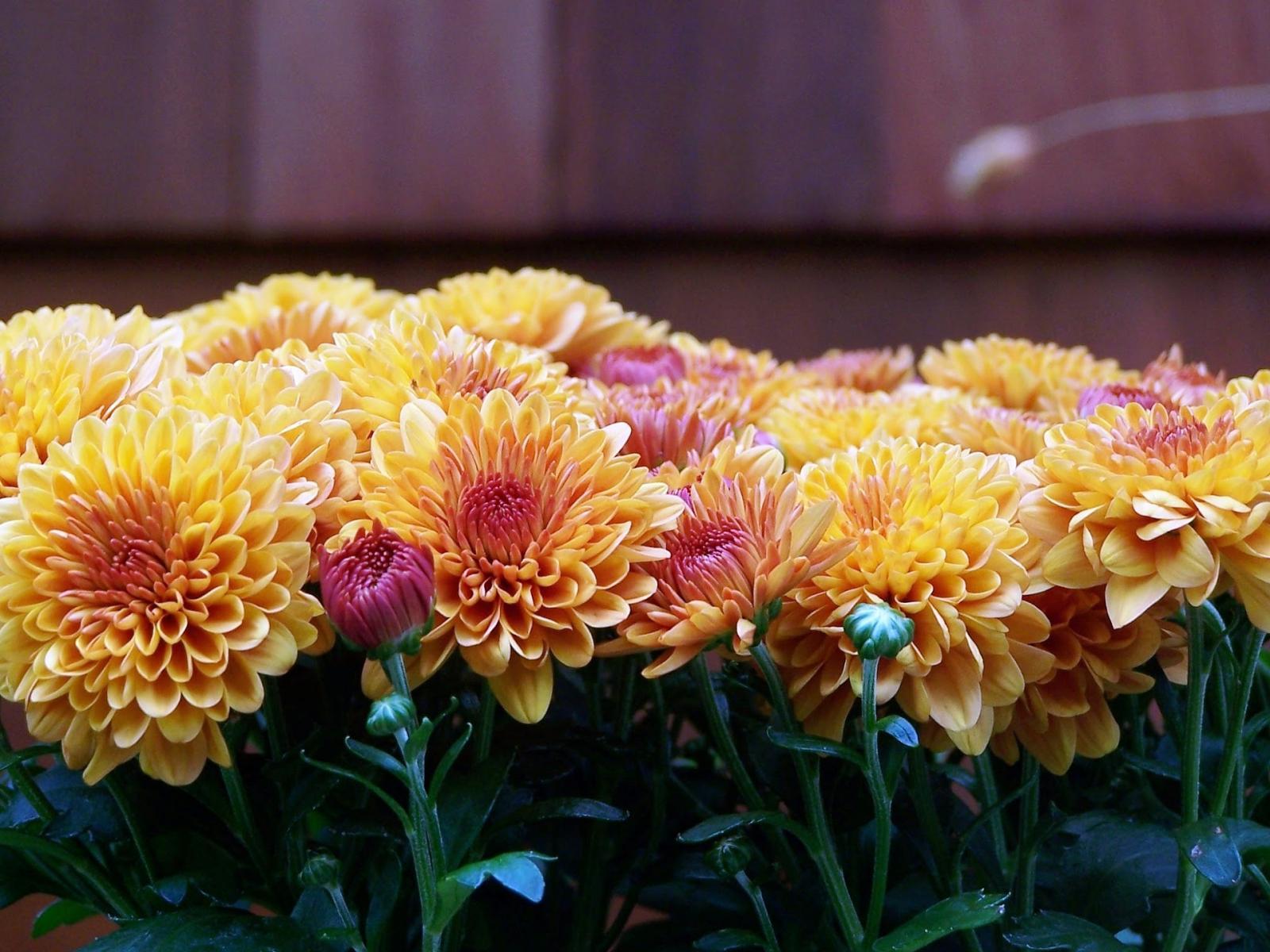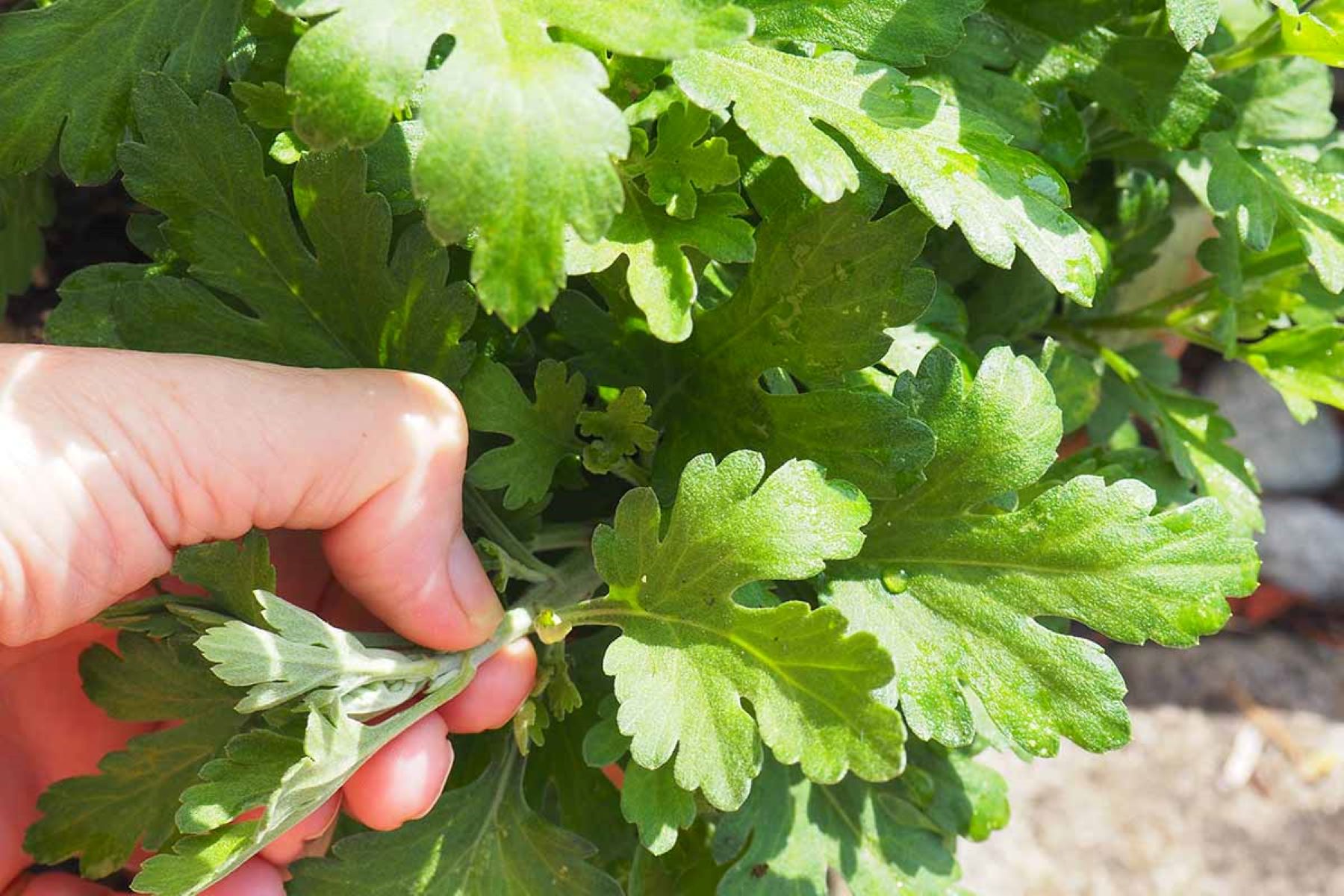Home>Gardening & Outdoor>Plant Care & Gardening Tips>How To Grow Mums To Sell


Plant Care & Gardening Tips
How To Grow Mums To Sell
Modified: October 27, 2024
Learn expert plant care and gardening tips to grow beautiful mums that you can sell. Discover the secrets to successful mum cultivation and maximize your profits.
(Many of the links in this article redirect to a specific reviewed product. Your purchase of these products through affiliate links helps to generate commission for Storables.com, at no extra cost. Learn more)
Introduction
Mums, also known as chrysanthemums, are vibrant and versatile flowering plants that have become a staple in gardens and floral arrangements around the world. With their wide array of colors, shapes, and sizes, mums are a favorite among gardeners and florists alike. Whether you're a seasoned horticulturist or a budding entrepreneur looking to delve into the world of plant cultivation, growing mums can be a rewarding and profitable endeavor.
In this comprehensive guide, we will explore the essential steps and techniques for successfully growing mums to sell. From selecting the right mum varieties to marketing and selling your blooms, we will cover every aspect of the process to help you cultivate healthy, beautiful mums that are in high demand.
As we embark on this journey, it's important to recognize the immense popularity of mums in the floral market. These resilient and eye-catching flowers are in high demand for various occasions, including weddings, holidays, and special events. By mastering the art of growing mums, you can tap into this lucrative market and provide customers with stunning blooms that brighten up any space.
Whether you're planning to sell mums at local markets, florist shops, or online platforms, understanding the intricacies of mum cultivation is crucial for ensuring the quality and appeal of your products. With the right knowledge and techniques, you can cultivate mums that stand out for their vibrant colors, robust blooms, and extended vase life, setting your offerings apart in a competitive market.
Throughout this guide, we will delve into the nuances of selecting the most suitable mum varieties, preparing the soil for optimal growth, implementing effective watering and fertilization practices, and addressing common issues such as pests and diseases. Additionally, we will explore the art of pruning and pinching mums to encourage healthy growth and abundant flowering.
By the end of this journey, you will be equipped with the knowledge and skills needed to grow mums that captivate customers and drive sales. So, let's roll up our sleeves and dive into the world of mum cultivation, where beauty meets business in a flourishing garden of opportunity.
Key Takeaways:
- Cultivate vibrant mums by selecting the right varieties, preparing the soil, and implementing proper care techniques. This ensures robust growth and beautiful blooms that captivate customers and drive sales.
- Harvest and market your meticulously nurtured mums strategically to maximize their visibility and desirability. Diversify sales channels, engage with customers, and showcase the unique beauty of your blooms.
Read more: How To Grow Mums From Seed
Selecting the Right Mum Varieties
When it comes to growing mums for sale, selecting the right varieties is a crucial first step in ensuring the success of your venture. With a wide range of mum cultivars available, each boasting unique characteristics and growing requirements, it's essential to choose varieties that align with your target market and growing conditions.
-
Consider Market Demand: Before diving into mum cultivation, research the preferences of your target customers. Are they drawn to traditional, daisy-like blooms, or do they favor the intricate, pom-pom varieties? Understanding market trends and consumer preferences will guide your selection process and help you cater to popular demand.
-
Assess Growing Conditions: Mums thrive in different climates and environments, so it's important to consider your local growing conditions when choosing varieties. Some mums are more tolerant of cold temperatures, making them suitable for regions with early frosts, while others prefer warmer climates. By selecting varieties that align with your specific growing conditions, you can optimize plant health and productivity.
-
Explore Color Options: Mums are celebrated for their diverse color palette, ranging from vibrant yellows and oranges to rich purples and pinks. When selecting mum varieties, consider the color preferences of your target market and the seasonal demand for specific hues. Offering a diverse selection of colors can enhance the appeal of your mum offerings and cater to a broader customer base.
-
Evaluate Flower Forms: Mums exhibit a variety of flower forms, including single, semi-double, and fully double blooms, each with its own visual impact. Understanding the aesthetic preferences of your customers will guide your selection of mum varieties with the desired flower forms, whether it's the classic daisy-like appearance or the lush, densely packed petals of pom-pom mums.
-
Factor in Bloom Time: Mum varieties differ in their flowering periods, with some blooming early in the season and others reaching their peak later on. By selecting a mix of early, mid, and late-blooming varieties, you can extend your mum sales season and provide customers with a continuous supply of vibrant blooms.
By carefully considering market demand, growing conditions, color options, flower forms, and bloom times, you can strategically select mum varieties that align with your business goals and customer preferences. This thoughtful approach to variety selection sets the stage for cultivating a diverse and visually captivating mum collection that appeals to a broad spectrum of floral enthusiasts.
Preparing the Soil for Planting
Preparing the soil for planting mums is a foundational step that sets the stage for robust growth and vibrant blooms. Mums thrive in well-draining soil with a slightly acidic to neutral pH, typically ranging between 6.0 and 7.0. Before planting, it's essential to assess the soil composition and make necessary amendments to create an optimal growing environment for these resilient flowering plants.
Soil Assessment
Begin by evaluating the soil in your designated planting area. Mums prefer loamy soil that offers good drainage while retaining sufficient moisture. Conduct a simple soil texture test by taking a handful of moist soil and squeezing it. If the soil forms a tight ball that crumbles when lightly tapped, it has a desirable loamy texture. However, if it feels excessively sandy or heavy with clay, amendments will be necessary to improve its structure.
Soil Amendment
To enhance the soil structure and fertility, incorporate organic matter such as compost or well-rotted manure into the planting area. Organic amendments improve soil aeration, water retention, and nutrient availability, creating an ideal foundation for mum growth. Work the organic matter into the soil to a depth of 12-18 inches, ensuring even distribution throughout the planting site.
pH Adjustment
Mums thrive in slightly acidic to neutral soil conditions, so it's important to test the soil pH and make adjustments if necessary. A pH testing kit can provide valuable insights into the acidity or alkalinity of the soil. If the pH falls outside the optimal range, amendments such as elemental sulfur or lime can be used to modify the soil pH and create a hospitable environment for mum cultivation.
Soil Drainage
Proper drainage is crucial for mum health, as waterlogged soil can lead to root rot and other issues. If the planting area experiences poor drainage, consider incorporating organic matter and coarse sand to improve soil structure and facilitate water movement. Additionally, raised beds or mounded planting areas can be utilized to elevate the mum roots above potential waterlogged zones.
Mulching
Once the soil is prepared and mums are planted, applying a layer of organic mulch around the base of the plants can offer numerous benefits. Mulch helps conserve soil moisture, suppresses weed growth, and moderates soil temperature, creating a favorable microclimate for mum roots. Organic mulches such as shredded bark or straw can be applied to a depth of 2-3 inches, ensuring that the mulch does not directly touch the plant stems.
By meticulously preparing the soil for mum planting, you establish an environment that promotes healthy root development, robust growth, and prolific blooming. This foundational investment in soil preparation lays the groundwork for a thriving mum garden, setting the stage for successful cultivation and abundant floral harvests.
Planting Mums
Planting mums is a pivotal stage in the cultivation process, marking the transition from preparation to active growth and development. By adhering to best practices and mindful techniques, you can ensure that your mums establish strong roots and embark on a journey towards vibrant, abundant blooms.
Read more: How To Pick Mums
Planting Time and Location
Selecting the optimal planting time and location sets the stage for successful mum establishment. In regions with cold winters, it's advisable to plant mums in early spring, allowing them to acclimate and develop robust root systems before the onset of winter. Choose a planting location that receives ample sunlight, as mums thrive in full sun conditions, which typically equate to at least six hours of direct sunlight per day. Adequate sunlight not only promotes healthy growth but also enhances flower production, resulting in a more visually striking display.
Planting Technique
When planting mums, it's essential to dig planting holes that are slightly wider and deeper than the root ball of the mum plant. Gently remove the mum from its container, being mindful of the root structure, and place it in the center of the prepared hole. Ensure that the top of the root ball is level with the surrounding soil surface. Backfill the hole with soil, gently firming it around the base of the plant to eliminate air pockets. Water the newly planted mum thoroughly to settle the soil and provide essential hydration to support initial root establishment.
Spacing and Arrangement
Proper spacing is crucial for allowing mums to thrive and reach their full potential. When planting multiple mums, ensure adequate spacing between each plant to accommodate their mature size and prevent overcrowding. Typically, spacing mums 18-24 inches apart allows for ample air circulation and minimizes competition for resources, fostering healthier growth and reducing the risk of disease.
Container Planting
For those cultivating mums in containers, selecting the right pot size and type is essential for promoting healthy growth. Choose containers with adequate drainage holes to prevent waterlogging, and use a well-draining potting mix tailored for flowering plants. When planting mums in containers, ensure that the root ball is positioned at the same level as the container's rim, and water thoroughly after planting to support root establishment in the confined space.
By adhering to these planting guidelines, you can set the stage for robust mum growth and prolific flowering, laying the groundwork for a bountiful harvest of vibrant blooms. With careful attention to planting time, location, technique, spacing, and container considerations, you can cultivate mums that thrive and captivate with their resplendent beauty.
Read more: How To Deadhead Mums
Watering and Fertilizing Mums
Proper watering and fertilization are essential components of nurturing healthy and vibrant mums. By understanding the specific needs of these resilient flowering plants and implementing targeted watering and fertilization practices, you can foster robust growth, abundant blooms, and overall plant vitality.
Watering Mums
Mums benefit from consistent moisture levels in the soil, particularly during their active growth and blooming phases. However, it's crucial to strike a balance, as overwatering can lead to root rot and other issues. When determining the watering frequency for mums, consider the prevailing weather conditions, soil moisture levels, and the stage of plant growth.
During periods of dry weather or when mums are actively growing and flowering, aim to provide approximately 1 inch of water per week. This can be adjusted based on factors such as soil drainage, temperature, and humidity. When watering mums, it's advisable to apply the water directly to the soil at the base of the plants, avoiding wetting the foliage, which can contribute to disease development.
To assess the need for watering, perform a simple soil moisture test by inserting your finger into the soil near the mum plants. If the soil feels dry to a depth of 1-2 inches, it's an indication that watering is required. Conversely, if the soil feels excessively wet or waterlogged, adjust the watering frequency to prevent water-related stress on the mums.
Fertilizing Mums
Fertilization plays a pivotal role in providing mums with the essential nutrients needed for vigorous growth and prolific flowering. Before applying fertilizers, it's beneficial to conduct a soil test to determine the existing nutrient levels and identify any deficiencies that need to be addressed. This can guide the selection of appropriate fertilizers and application rates.
When selecting fertilizers for mums, opt for a balanced, slow-release fertilizer with a formulation such as 10-10-10 or 12-12-12, which provides a mix of nitrogen, phosphorus, and potassium, along with micronutrients. Slow-release fertilizers offer a steady supply of nutrients to the mums over an extended period, promoting sustained growth and bloom production.
Incorporate the fertilizer into the soil around the base of the mum plants, following the recommended application rates provided on the product label. It's advisable to fertilize mums in early spring as new growth emerges, and then again after the first flush of blooms to support continued flowering. Avoid over-fertilization, as excessive nitrogen can lead to lush foliage at the expense of flower production.
By adhering to targeted watering practices and providing appropriate fertilization, you can nurture mums that exhibit vigorous growth, vibrant blooms, and overall resilience. These foundational care practices contribute to the long-term health and visual appeal of mums, ensuring that they stand out as captivating floral specimens in any garden or market setting.
Pruning and Pinching Mums
Pruning and pinching are essential techniques for shaping the growth and enhancing the flowering potential of mums. By understanding the principles behind these practices and implementing them at the appropriate times, you can encourage compact, bushy growth and stimulate the production of abundant blooms.
Read more: How To Decorate With Mums
Pinching for Bushy Growth
Pinching, also known as disbudding, involves the removal of the terminal bud and a portion of the stem tips to promote lateral branching and compact growth. This technique is typically applied to young mum plants to encourage the development of multiple stems and a fuller, more robust appearance.
When the new growth reaches a height of 4-6 inches, use your fingers or sharp pruning shears to pinch off the top inch of each stem, just above a set of leaves. This prompts the plant to redirect its energy towards lateral bud development, resulting in a denser and more floriferous habit. Repeat the pinching process every 2-4 weeks until early summer, allowing ample time for the plant to develop a well-branched structure.
Pruning for Shape and Vigor
Pruning mums involves the selective removal of spent blooms, leggy growth, and damaged or diseased stems to maintain plant health and shape. As the growing season progresses, regularly inspect the mum plants for faded flowers and trim them back to a set of healthy leaves or lateral buds. This not only tidies up the plant's appearance but also prevents the formation of seeds, redirecting energy towards new flower production.
Additionally, if you notice any weak or excessively long stems that detract from the plant's overall form, consider pruning them back to a desirable length. This encourages a more compact and balanced growth habit, ensuring that the mum plant maintains an attractive silhouette and allocates its resources efficiently.
Timing and Frequency
The timing of pinching and pruning activities is crucial for maximizing their effectiveness. Pinching should commence in the early stages of mum growth, typically when the new shoots have developed several sets of leaves. This allows ample time for the plant to respond to the pinching stimulus and produce a profusion of lateral branches.
As for pruning, it's advisable to conduct regular maintenance throughout the growing season, focusing on the removal of spent blooms and corrective trimming as needed. By staying vigilant and addressing any irregular growth or declining vigor promptly, you can maintain the overall health and visual appeal of the mum plants.
By incorporating pinching and pruning into your mum care routine, you can sculpt the growth, enhance the flowering potential, and promote a lush, well-structured canopy of blooms. These techniques contribute to the overall vitality and aesthetic charm of mums, ensuring that they captivate with their abundant, vibrant flowers and lush, compact foliage.
Dealing with Pests and Diseases
Maintaining the health and vigor of mums involves proactive measures to address potential threats from pests and diseases. By staying vigilant and implementing targeted strategies, you can safeguard your mum plants against common adversaries, ensuring that they thrive and flourish without succumbing to detrimental infestations or infections.
Read more: How To Fertilize Mums
Pest Management
Pests such as aphids, spider mites, and leafhoppers can pose significant challenges to mum plants, impacting their growth and flowering potential. To mitigate pest infestations, regular monitoring of the plants is essential, allowing for early detection of any signs of pest activity. Inspect the foliage, stems, and undersides of leaves for the presence of pests, and be attentive to symptoms such as stippling, wilting, or distorted growth.
When addressing pest issues, consider employing natural predators such as ladybugs or lacewings, which can help control aphid populations through predation. Additionally, hosing down the plants with a strong stream of water can dislodge spider mites and aphids, reducing their numbers and minimizing damage. For severe infestations, targeted applications of insecticidal soaps or horticultural oils can provide effective control while minimizing environmental impact.
Disease Prevention
Mums are susceptible to fungal diseases such as powdery mildew, gray mold (Botrytis), and leaf spot, which can compromise plant health and diminish aesthetic appeal. To prevent the onset of fungal diseases, it's crucial to promote good air circulation around the plants by spacing them appropriately and avoiding overcrowding. This reduces humidity levels and minimizes the favorable conditions for fungal growth and spread.
In addition, watering the plants at the base and avoiding overhead irrigation can help prevent the splashing of soil-borne pathogens onto the foliage, reducing the risk of disease transmission. Furthermore, removing and disposing of any infected plant debris or spent blooms can limit the spread of fungal spores, contributing to a healthier growing environment for the mums.
Integrated Pest Management
Adopting an integrated approach that combines cultural practices, biological controls, and targeted interventions can bolster the resilience of mum plants against pests and diseases. By promoting plant health through proper watering, fertilization, and soil management, you can enhance the natural defenses of the mums, making them less susceptible to pest attacks and disease development.
Furthermore, maintaining a clean garden environment by removing weeds and debris, as well as practicing crop rotation, can disrupt pest and disease cycles, reducing their impact on mum plants. When considering chemical interventions, opt for low-toxicity options and adhere to application guidelines to minimize potential harm to beneficial organisms and the broader ecosystem.
By implementing a comprehensive pest and disease management strategy, you can fortify the health and vitality of your mum plants, ensuring that they remain resilient and visually captivating throughout the growing season. This proactive approach to pest and disease control contributes to the long-term success of mum cultivation, fostering a garden filled with thriving, beautiful blooms.
Harvesting Mums for Sale
Harvesting mums for sale marks the culmination of meticulous care and cultivation, transforming the fruits of your labor into captivating floral offerings that are ready to grace homes, events, and special occasions. As the vibrant blooms reach their peak splendor, it's essential to employ strategic harvesting techniques to ensure the longevity and visual appeal of the cut mums, enhancing their marketability and customer satisfaction.
Read more: How To Propagate Mums
Timing and Bloom Stage
The timing of mums' harvest is critical in determining the quality and longevity of the cut flowers. Ideally, mums should be harvested when the flower buds have achieved their desired color and form, but before they reach full bloom. At this stage, the petals are firm, and the colors are vibrant, ensuring a longer vase life and enduring beauty. Harvesting at the right bloom stage contributes to the overall market value of the mums, as customers seek blooms that are poised to unfurl and grace their surroundings with lasting elegance.
Stem Length and Cutting Technique
When harvesting mums, it's important to consider the desired stem length based on market preferences and floral arrangement requirements. Using sharp, clean floral shears, cut the stems at a 45-degree angle, ensuring a clean and precise cut that promotes efficient water uptake. The ideal stem length varies depending on the intended use, with longer stems catering to elaborate floral designs and shorter stems suiting compact arrangements and bouquets. By tailoring the stem length to diverse customer needs, you can expand the market appeal of your harvested mums and cater to a wide range of floral applications.
Post-Harvest Handling and Storage
Upon harvesting, it's crucial to promptly immerse the cut mums in clean, lukewarm water to hydrate the stems and preserve the freshness of the blooms. Remove any foliage that will be submerged in the water to prevent bacterial growth and maintain water clarity. To prolong the vase life of the mums, store them in a cool, well-ventilated area away from direct sunlight and ethylene-producing fruits, which can hasten flower senescence. Implementing proper post-harvest handling and storage practices ensures that the mums retain their vibrancy and appeal, enhancing their market shelf life and customer satisfaction.
Packaging and Presentation
As you prepare the harvested mums for sale, consider the packaging and presentation aspects that elevate their visual allure and market desirability. Utilize eco-friendly, moisture-retentive packaging materials that protect the blooms during transit and showcase their vibrant colors. Incorporate personalized touches such as branded labels or care instructions to engage customers and convey the quality and care invested in the mums' cultivation. By presenting the harvested mums in an enticing and professional manner, you can captivate potential buyers and instill confidence in the quality of your floral offerings.
Read more: How Big Will Mums Get
Market Readiness
With the harvested mums primed for sale, consider the diverse market channels and opportunities available for showcasing and retailing the blooms. Whether through local farmers' markets, florist shops, or online platforms, leverage effective marketing strategies and visual merchandising to highlight the unique attributes of your mums. Engage with potential customers through social media platforms and community events, showcasing the beauty and versatility of the harvested mums to attract a loyal customer base. By aligning the market readiness of the mums with targeted promotional efforts, you can maximize their visibility and desirability, fostering a thriving market presence and customer appreciation.
In essence, harvesting mums for sale encompasses a blend of artistry, timing, and market acumen, culminating in a bountiful offering of vibrant blooms that captivate and inspire. By infusing care and attention into every stage of the harvesting process, you can elevate the market appeal and customer allure of your mums, establishing a reputation for quality and distinction in the floral industry.
Marketing and Selling Your Mums
Marketing and selling your mums is a pivotal phase that bridges the culmination of cultivation with the embrace of eager customers seeking vibrant floral adornments. As you prepare to showcase your meticulously nurtured mums to the world, strategic marketing initiatives and effective sales channels play a crucial role in amplifying their visibility and desirability.
Embracing Diverse Sales Channels
Diversifying your sales channels broadens the reach of your mums, catering to a spectrum of customer preferences and purchasing behaviors. Consider partnering with local florists, garden centers, and farmers' markets to tap into established networks and engage with floral enthusiasts seeking premium blooms. Additionally, leveraging online platforms and e-commerce avenues expands your market presence, enabling customers to conveniently access and procure your mums from the comfort of their homes.
Visual Merchandising and Branding
Captivating visual merchandising and branding initiatives elevate the allure of your mums, positioning them as distinctive floral offerings with inherent beauty and quality. Thoughtfully designed displays at retail outlets and market stalls showcase the vibrant colors and diverse varieties of your mums, drawing customers in with their visual splendor. Incorporating branded packaging and labels imparts a sense of authenticity and care, fostering trust and recognition among buyers.
Read more: How To Winterize Garden Mums
Engaging Social Media and Community Events
Harness the power of social media platforms to showcase the captivating charm of your mums, engaging with potential customers through visually compelling posts, behind-the-scenes glimpses of cultivation, and customer testimonials. By fostering an online community around your floral offerings, you can cultivate a loyal customer base and generate buzz around your mums. Furthermore, participation in community events, flower shows, and local festivals provides opportunities to interact directly with customers, allowing them to experience the beauty and allure of your mums firsthand.
Tailored Marketing Campaigns
Crafting targeted marketing campaigns that highlight the unique attributes and seasonal appeal of your mums can captivate the attention of potential buyers. Emphasize the versatility of mums as decorative accents for weddings, festive celebrations, and everyday adornments, showcasing their ability to infuse any setting with vibrant elegance. By aligning your marketing efforts with seasonal trends and occasions, you can position your mums as must-have floral accents that enrich and enliven any environment.
Cultivating Customer Relationships
Nurturing customer relationships through personalized interactions, attentive customer service, and post-purchase care fosters loyalty and advocacy for your mums. Encourage feedback and testimonials from satisfied customers, leveraging their experiences to bolster the reputation and appeal of your floral offerings. By prioritizing customer satisfaction and engagement, you can cultivate a loyal following that eagerly anticipates each new season's bloom offerings.
In essence, marketing and selling your mums is a multifaceted endeavor that intertwines creativity, market acumen, and customer engagement. By leveraging diverse sales channels, captivating visual merchandising, targeted marketing campaigns, and personalized customer interactions, you can position your mums as sought-after floral treasures that enchant and inspire customers, fostering a thriving market presence and enduring appreciation for your floral artistry.
Frequently Asked Questions about How To Grow Mums To Sell
Was this page helpful?
At Storables.com, we guarantee accurate and reliable information. Our content, validated by Expert Board Contributors, is crafted following stringent Editorial Policies. We're committed to providing you with well-researched, expert-backed insights for all your informational needs.








0 thoughts on “How To Grow Mums To Sell”